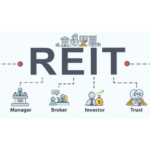Investing is one of the most effective ways to build wealth over time — but with reward comes risk. Market volatility, inflation, and unexpected events can all impact your returns. That’s where diversification comes in. A well-diversified investment portfolio helps you balance risk, improve stability, and increase your chances of long-term success.
Here’s how you can create a diversified investment portfolio that works for your financial goals.
What Is Diversification?
Diversification means spreading your investments across different asset classes, sectors, and regions to reduce exposure to any single risk. In simple terms — don’t put all your eggs in one basket.
When one part of your portfolio performs poorly, another might perform well, balancing your overall returns. This approach doesn’t eliminate risk entirely, but it helps cushion the impact of market downturns.
Step 1: Define Your Financial Goals and Risk Tolerance
Before investing, understand why you’re investing and how much risk you’re comfortable taking.
Ask yourself:
- Am I investing for short-term goals (like buying a car or house)?
- Or long-term goals (like retirement or wealth building)?
- How would I feel if my investments lost 10–20% in value temporarily?
Your answers determine your investment horizon and risk profile — two key factors in deciding how diversified your portfolio should be.
- Conservative investors focus more on stable assets like bonds and cash.
- Moderate investors balance between stocks, bonds, and alternative assets.
- Aggressive investors take on more equities and higher-risk investments for higher potential returns.
Step 2: Choose a Mix of Asset Classes
The foundation of diversification lies in spreading your money across different asset classes, such as:
1. Stocks (Equities)
- Represent ownership in companies.
- Offer higher potential returns but also higher volatility.
- Can be diversified by industry (tech, healthcare, finance) or region (local, emerging markets, global).
2. Bonds (Fixed Income)
- Provide steady income and stability.
- Tend to perform well when stocks are under pressure.
- Diversify by type (government, corporate) and maturity (short-term, long-term).
3. Cash and Cash Equivalents
- Include savings accounts or money market funds.
- Offer liquidity and safety but lower returns.
- Useful as an emergency buffer.
4. Real Assets
- Examples: real estate, gold, or commodities.
- Help hedge against inflation and currency fluctuations.
5. Alternative Investments
- Include private equity, hedge funds, or crypto assets.
- Can enhance returns but come with higher risks and lower liquidity.
A simple diversified portfolio might look like this:
- 60% stocks
- 30% bonds
- 10% cash or alternatives
This can be adjusted based on your goals and risk appetite.
Step 3: Diversify Within Each Asset Class
Even within each category, diversification is key. For example:
- Don’t invest all your money in one company’s stock — spread across different sectors.
- For bonds, mix government and corporate issues with varying maturity dates.
- For global diversification, include investments from both developed and emerging markets.
The goal is to make sure that if one area suffers, the others can help balance your overall returns.
Step 4: Use Index Funds and ETFs
For many investors, index funds and exchange-traded funds (ETFs) are simple, cost-effective tools for diversification.
- They offer instant exposure to hundreds or even thousands of companies.
- Low management fees make them suitable for long-term investing.
- You can choose funds that track specific markets (like the S&P 500) or sectors (like clean energy).
These “set and forget” options are ideal for those who don’t have the time to pick individual stocks.
Step 5: Rebalance Regularly
Over time, some investments will grow faster than others — shifting your portfolio’s balance. Rebalancing means adjusting your holdings back to your original target allocation.
For example, if your stock investments grow and now make up 70% of your portfolio instead of 60%, you might sell some stocks or buy more bonds to restore balance.
Rebalancing keeps your portfolio aligned with your risk tolerance and financial goals.
Step 6: Stay Patient and Consistent
Diversification is a long-term strategy, not a quick fix. Markets fluctuate — but a well-diversified portfolio helps you stay resilient during downturns.
- Avoid reacting emotionally to short-term market changes.
- Focus on your long-term objectives and continue investing consistently.
Over time, the power of compounding and disciplined investing will work in your favor.
Conclusion
Creating a diversified investment portfolio is about finding the right balance between risk and reward. By spreading your investments across various assets, sectors, and regions, you reduce your exposure to volatility while keeping your money working toward your goals.
Remember: you can’t predict the market, but you can control your strategy.
Diversify wisely, stay disciplined, and let time and consistency grow your wealth. 🌱















